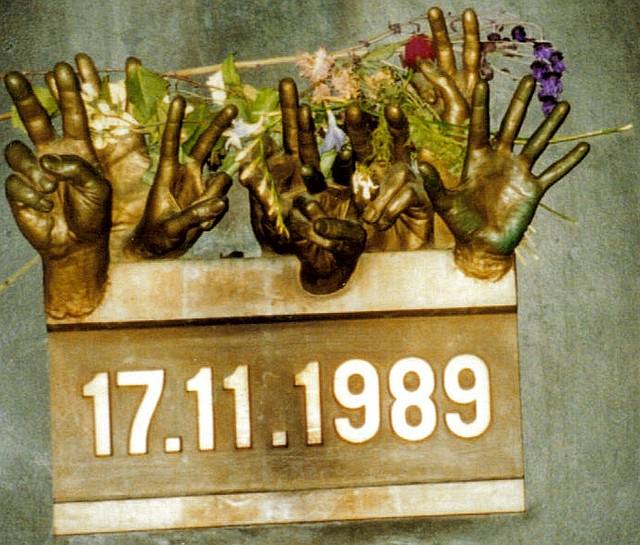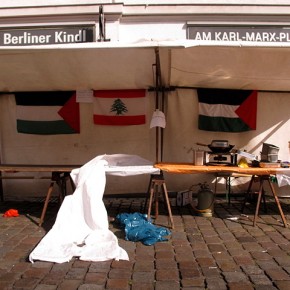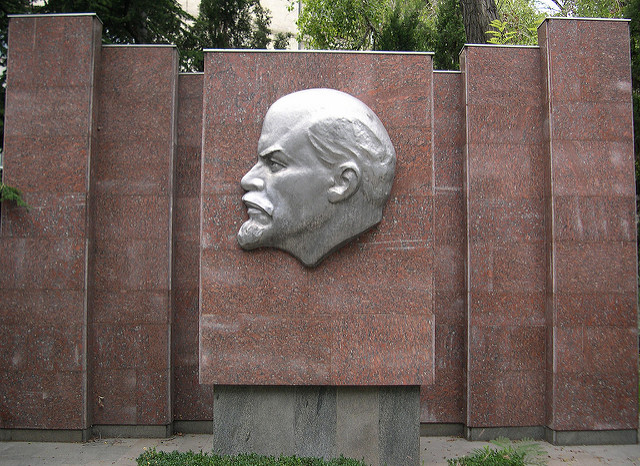Prospects for peace seemed especially bleak at the beginning of 1989. Detente appeared on the brink of collapse. Washington showed a clear hand in the Soviet Union’s protracted war in Afghanistan. A scheduled meeting between Mikhail Gorbachev and Deng Xiaoping meant a possible end to the Sino-Soviet split, and a renewed alliance against the US. American conservatives meanwhile girded themselves for a post-Cold War conflict, of unknown duration and intensity.
Yet, by the end of year, revolutions had swept through Central and Eastern Europe. The children of a generation that participated in the failed uprisings of 1956 and 1968 appeared to have vindicated their parents. The Soviet Union would soon collapse, and Germany would reunify. The bewilderment these events produced was nearly impossible to put into perspective until a generation later, when a wave of popular demonstrations ripped through the Arab Middle East, and toppled entire governments seemingly overnight.
As with the Arab Spring, political analysts were left scrambling for an explanation. Ill prepared, their answers sounded eerily familiar to those of the Western news media in the Fall of 1989: political repression, mixed with economic disenfranchisement and youth, is a recipe for revolution. Drawing many a comparison to ’89, too, it was as though history was repeating itself. Cause and effect scenarios were routinely invoked to rationalize the upheaval, as though it adhered to universal laws, valid in every country and every political situation.
The problem with this analytical reflex is that although it helps explain certain things, it never accounts for what inspires events, for example, like Czechoslvakia’s Velvet Revolution. Why do they happen at particular historical periods and not others? What makes some revolutions successful and not others? Are the failings of European communism really the same as those of Bedouin monarchs and Arab dictators? They’re basic questions, clearly. Unfortunately, news media is the first place that people go to make sense of the world, where we encounter such equations. It would help if at least some of the time, it got things reasonably right.
So fearful is its coverage of social unrest, that it draws a blank whenever coverage is necessary. The problem is that since the end of the Cold War, the upheaval hasn’t stopped. Yet, the English-speaking world remains beholden to the notion of surprise, typical of the Cold War era, that there is some kind of continuum in daily life, around the world, that revolutions, for example, remain an eternal exception to. It’s as though 9/11 never happened in New York, or 7/7 in London. The US and the UK, though they often appear to forget it, are a part of history, too.
A veteran of Cairo’s Tahrir Square protests, such questions of have especially preoccupied me as of late, as I search for precedents to help explain what I experienced there. Inevitably I am lead back to 1989 as though it was the start of a process of which I continue to be a part of. I am particularly interested in the continuum of non-violent protest, which was part of political protests in parts of the world not celebrated for their overthrow of communism. I am thinking in China, in particular the Tiananmen Square protests, twenty-four years ago, frequently deleted from popular accounts of this revolutionary time.
Protests by Chinese students began in April 1989, after the death of former Communist Party General Secretary Hu Yaobang. Students sought to honor Yaobang’s memory with a productive call for social change, which is an instinct that relies on a tradition of grassroots dissent to even be synthesized. Hence, students converged at Tiananmen Square because it was the center of a rich tradition of local protest, whether in the May Fourth movement of 1917 or the Tiananmen Square protests of 1975.
Characteristics of the seven week protests had been learned from popular struggles more broadly: they were initially buoyed with strong support from urban workers, students quickly networked with progressive factions that joined the protests, hunger strikes were used to establish moral legitimacy and reinvigorate the movement’s dying momentum, and so on. Protestors at Tiananmen were quick to take advantage of the media presence (initially intended for the summit between Gorbachev and Xiaoping) to establish a national and international presence. Through smart organizing, the spark that was Yaobang’s death lead to millions of people protesting in four hundred Chinese cities.

However, Tiananmen Square had its problems. The presence and ambitions of various organizations led to unclear demands and confusion among party officials. Much of the protest movement’s problems, however, were the result of its immaturity and the sudden convergence of disparate groups into a shared setting of protest. It is interesting that these logistical and competitive issues would later be observed in the 2009 – 2010 Iranian election protests and 2011 – 2012 protests associated with Occupy Wall Street. Many of these problems could have been addressed had the movement been allowed to develop. This said, the 20th May declaration of martial law, and mass crackdown on June 3rd and 4th, put an end to those possibilities.
Neither issue was present in Central and Eastern Europe. As a result of international outcry surrounding the Chinese crackdowns, Gorbachev implicitly repealed the Brezhnev Doctrine in a July 7th 1989 address to the Council of Europe. Moscow would no longer use force to prevent a Warsaw Pact member from leaving the Communist sphere. Movements such as the independent Polish trade union Solidarity had grown massively in strength and influence. Following their success in Polish elections on June 4th, 1989 that followed a wave of strikes in April and May 1988, further galvanized by the events at Tiananmen Square, Solidarity mobilized even further. By August 24th 1989, Poland’s parliament ended forty-three years of one party rule. Hungarian activists, with awareness of their failed revolution of 1956, were next to follow, and by the end of the year, the Autumn of Nations had spread across the Soviet bloc.
Events at Cairo’s Tahrir Square played out in a very similar way. Noting inspirational images of popular struggle in Tunisia, activists independently agreed on a Day of Rage on January 25th, 2011. The revolutionary esprit de corps of the demonstrators was a direct consequence of the two Palestinian intifadas, which helped inspire grassroots organizing, and discredited the use of violence as an effective means of social change. Learning from previous radical movements, as well as their own predecessors, they adopted an approach similar to that of the students at Tiananmen Square in reaching out to progressive organizations and forming strong ties with Egypt’s labor movement. The end result: Hosni Mubarak resigned on February 13th, 2012.
Most importantly, memories of China’s violent crackdown in Tiananmen Square helped dampen Mubarak’s sense of freedom in putting down the Tahrir protests. The fear was clear, particularly if one paid attention to the number of parallels being made to Tiananmen at the time, not just amongst activists, eager to be more successful than their Chinese peers, but also amongst politicians, and an ever-conservative global news media, eager to see the Egyptian revolution as a replay of 1989, in Eastern Europe.
By the end of 2012, radical movements throughout the region had treated the Egyptian revolution as a catalyst, whose inspiration is still being felt today, in both North Africa, and of course, Syria. Though some of these revolutions have been more successful than others, the Middle Eastern political landscape has been irreversibly transformed by them, largely for the better. Despite, that is, the disappointments experienced in Egypt, where the struggle for democracy has renewed itself as of late.
My greatest fear is that the Egyptian revolution will end up being as disappointing as that attempted in China. Will the political energies that threw out Mubarak lead to real democracy, or will it remain instrumental in the perpetuation of the status quo? Only time will tell. In the interim, what I hope for is something closer to the Eastern European example. That’s the connection, for me, between the collapse of Communism, and the Arab Spring, and why 1989 and 2012 remain worthy of comparison. Hopefully 2013 will end on a better note than it started.
Photographs courtesy of Diego Sideburns and Robert Croma. Published under a Creative Commons license.





